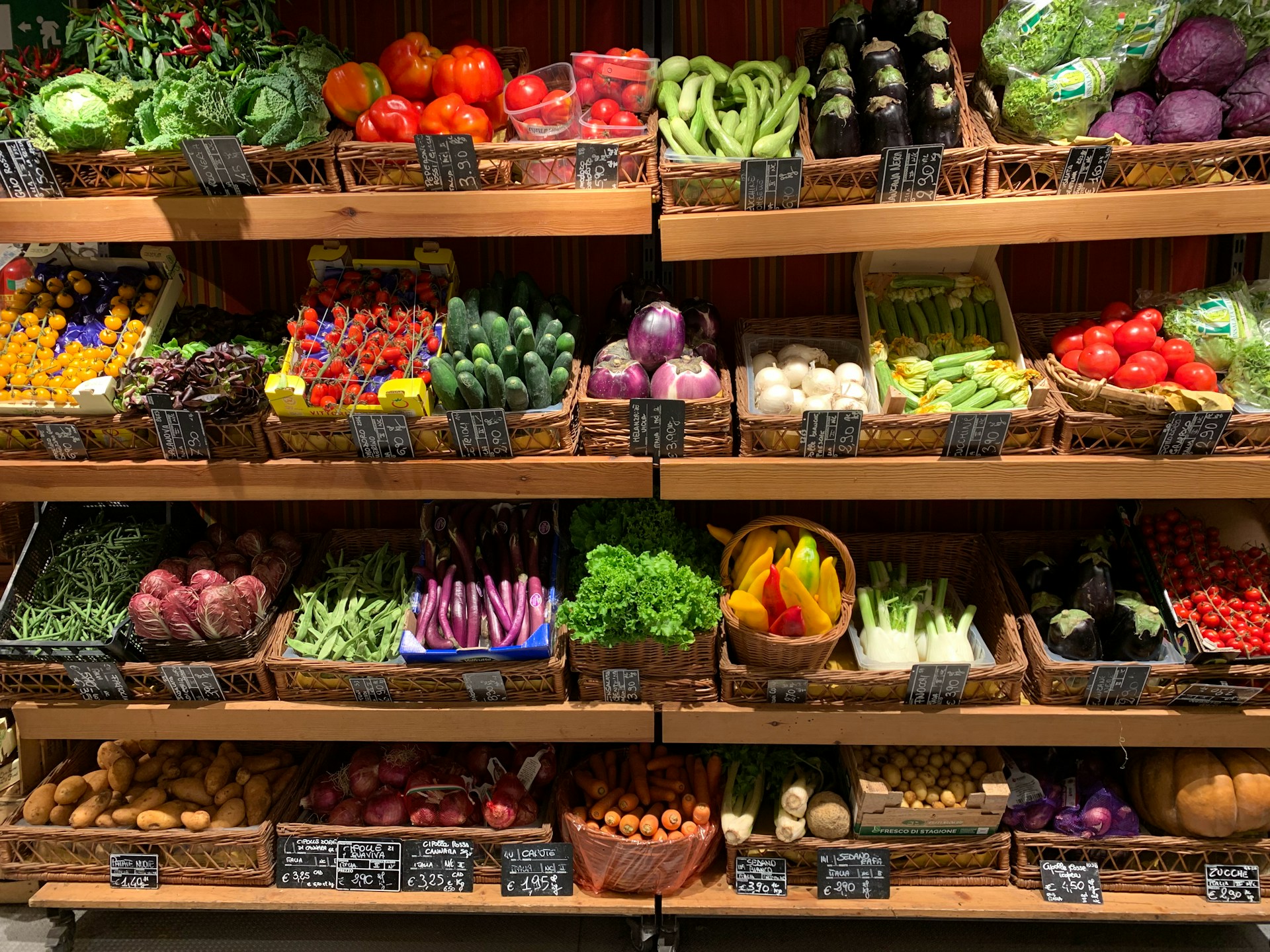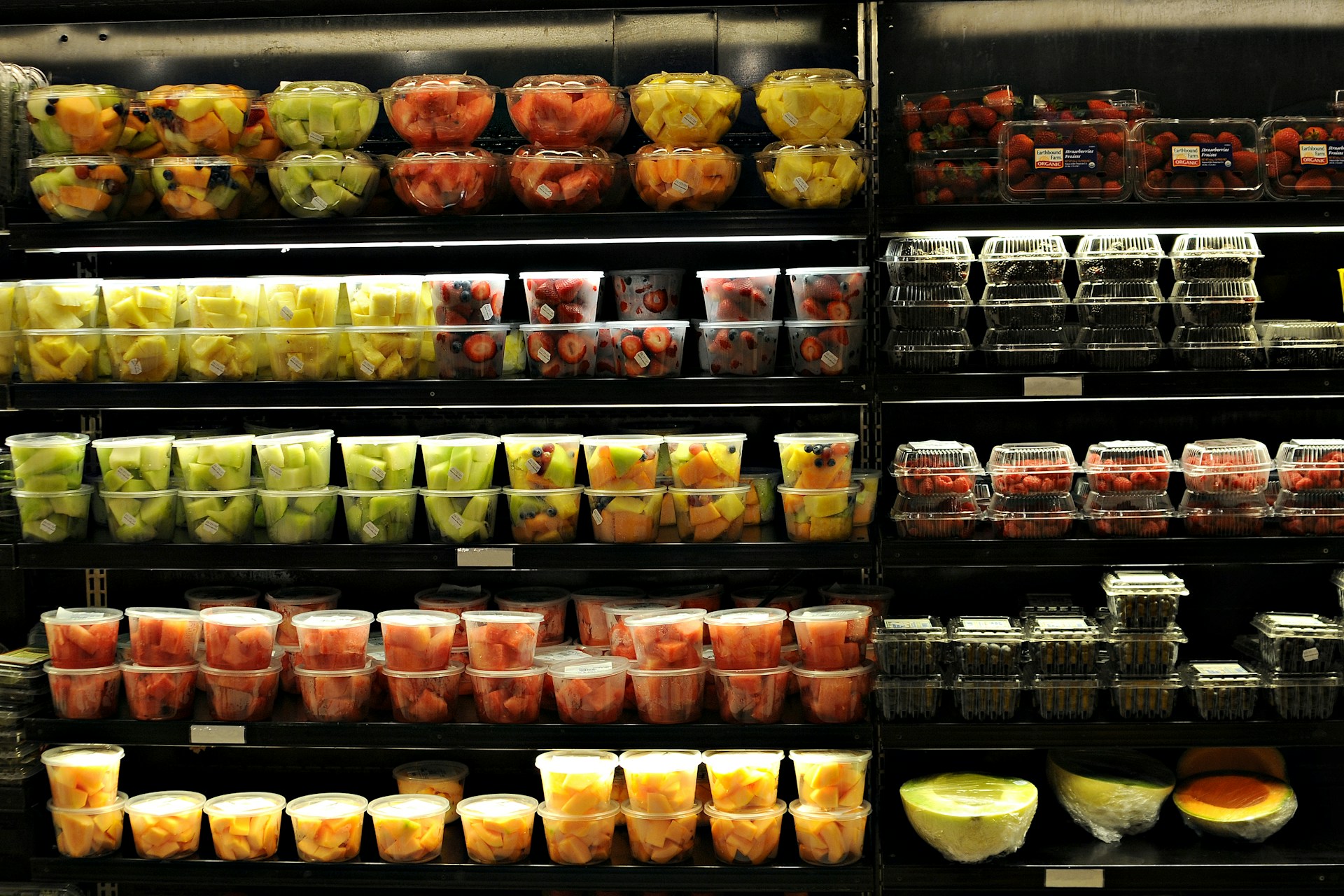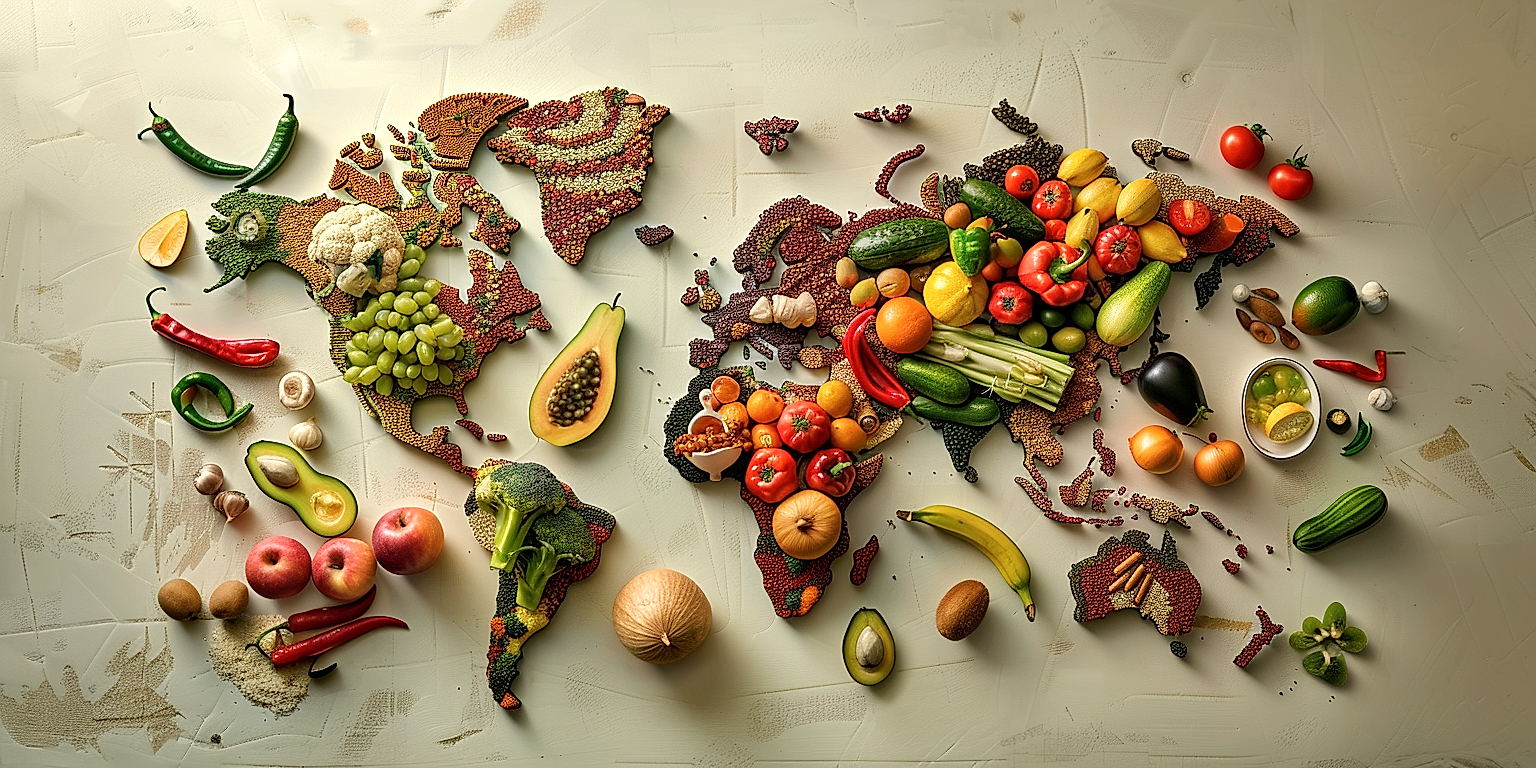In today’s competitive marketplace, the success of processed produce brands depends largely on effective marketing strategies.
These product-centric businesses face a significant challenge in terms of distinguishing themselves from the competition and establishing a distinct presence.
This requires knowledge of the consumer habits, interests, and purchasing patterns as well as the ability to respond to these behaviours with a tailor-made marketing approach.
Achieving these objectives can make a striking difference in your brand’s stature.
In this respect, a well-planned and executed marketing strategy is critical.
This blog article delves into noteworthy marketing strategies that can help elevate your processed produce brand.
Contents
- Marketing Techniques For Processed Produce Brands
- 1. Social Media Targeted Advertising
- 2. Sponsor Health and Fitness Events
- 3. Influencer-Endorsed Promotions.
- 4. Recipe Creation and Sharing
- 5. Loyalty Program Development
- 6. Free Sampling in Grocery Stores
- 7. Contest and Giveaway Promotions
- 8. Product Placement in TV Shows
- 9. Co-branding partnerships with non-competitors.
- 10. Email newsletters with special discounts.
- The Bottom Line
Marketing Techniques For Processed Produce Brands
1. Social Media Targeted Advertising
The world is increasingly digital, and the role of social media in consumer’s daily lives cannot be understated.
Targeted advertising on these platforms has emerged as a highly effective marketing technique for all brands, and processed produce brands are no exception.
For a processed produce brand, understanding the target audience is the first step towards creating a successful social media advertising campaign.
This involves identifying their age, location, interests, and dietary preferences.
In-depth audience analysis ensures the brand’s advertising contents are tailored to perfectly resonate with the prospective buyers.
The second step involves selecting the right social media platforms.
Brands must understand where their target audiences predominantly hangout- it could be Facebook, Instagram, Pinterest, or LinkedIn, and then invest accordingly.
Once the brand has selected the ideal platforms, the next task is to create engaging content for the advertising campaign.
This could be anything from attractive images of the processed produce to exciting recipe videos or infographic nutritional facts about the products- the key is to create content that grabs the audience’s attention and interests.
Engagement is another significant factor that contributes to the success of social media advertising campaigns.
Brands should actively respond to comments, queries, and suggestions under their advertising posts- they can further enhance the engagement level by hosting quizzes or polls around their products.
The use of hashtags is another effective approach to expanding the reach of the advertising content.
Especially on platforms like Instagram, original and creatively curated hashtags can easily enhance brand visibility and create trending conversations around the brand’s products.
While all this might require thoughtful planning and execution, the return on investment that social media advertising offers is tremendous.
The kind of detailed customer insights these platforms provide is truly unparalleled, making it easier for brands to constantly evolve their strategies and remain competitive in the market.
2. Sponsor Health and Fitness Events
Within the realm of marketing, sponsorship of health and fitness events is a powerful strategy, especially for processed produce brands.
Given the rising awareness about the importance of eating healthily and staying fit, these events attract a large number of people who strive to maintain a balanced lifestyle.
Processed produce brands can sponsor these events as a way to get their products in front of these health-conscious consumers.
When sponsoring fitness-based events, such as a marathon or wellness fair, brands can set up stalls where they give away free samples of their products or sell them at a discounted price.
This is a great way to introduce people to the taste and quality of your products, as attendees at these events are generally open to trying new foods, particularly those linked to healthy living.
Additionally, sponsoring health and fitness events gives brands a chance to be associated with positive, wellness-focused themes, which can elevate their image in the eyes of consumers.
Moreover, including your brand’s logo on event materials can improve brand visibility, both at the event itself and in any media coverage it may receive.
It is also worth considering partnering with influencers or notable figures in the health and fitness space to represent your brand at these events.
These figures can act as brand ambassadors, which can significantly boost your brand reputation and add a layer of trust and credibility to your products.
However, it’s crucial to ensure that these partnerships are authentic and align with your brand message.
Your audience will be more likely to form a positive perception of your brand if they believe that the ambassadors truly use and endorse your products.
To make the sponsorship more interactive and engaging, you could organize contests or games with your products, encouraging active participation from attendees.
This will not only create a fun and memorable event experience but also increase attendees’ familiarity with your brand.
The feedback received at events can also be valuable in helping shape future campaigns or even inspire new product development.Listening to your audience is an integral part of marketing.
In conclusion, sponsorship of health and fitness events can be a potent marketing tool, helping to increase brand exposure, associate the brand with healthy values, and establish direct contact with potential consumers.Appealing to the health-conscious consumer is paramount for processed produce brands.
Processed produce brands can sponsor these events as a way to get their products in front of these health-conscious consumers.
3. Influencer-Endorsed Promotions.
One greatly effective way to market processed produce brands is through influencer-endorsed promotions.
The power of social media influencers in this digital age can never be underestimated.
These influencers can effectively promote your processed foods as a major part of their daily diet, thereby endorsing them to their large following.
Depending on your brand’s target demographic, you should select influencers who align with your brand’s values and who appeal to your desired customer segment.
For instance, health and fitness influencers can promote your products as items that enhance their wellness, particularly if your products are health-focused.
On the other hand, influencers known for their culinary skills can be used to showcase the versatility of your products through the creation of unique and delicious recipes.
Furthermore, influencers can host giveaways on their platform, thereby increasing the visibility and desire for your products, especially if they are somehow incorporated into the influencer’s personal narrative or lifestyle.
When it comes to negotiation, you can have a contract agreement with these influencers, which can either involve cash payments or free product supplies.
These influencers can provide the much-needed third party validation for your brand’s products, promoting not just product visibility but also increasing overall sales.
One major advantage of using influencers for promotions is the authentic engagement that comes with it.
Unlike some forms of advertisements which are presented to an audience who may not want it, influencer marketing reaches the audience in a more natural and less intrusive way.
Moreover, potential consumers trust and respect the opinions of these influencers and are thus more likely to try out your products.
Using influencers as part of your marketing strategy can have a significant impact on the digital presence and popularity of your processed produce brand.
Influencer marketing is not only effective in the short term, generating quick visibility and interest in your products, but can also have lasting long-term effects in building brand loyalty and recognition.
Overall, this marketing strategy leverages the credibility and reach of influencers to effectively endorse your brand’s processed products to a wider audience, ultimately leading to increased sales and brand recognition.
4. Recipe Creation and Sharing
Amidst the mainstream marketing strategies for processed produce brands, using recipe creation and sharing is a nutrient-rich, flavorful approach to showcase the versatility and convenience of your products.
Creating unique and enticing recipes using your own products, allows potential customers to visualize using them in real-life scenarios
.This strategy not only promotes your products, it also provides genuine value to the consumer.
For instance, if you offer canned corn, create a variety of recipes featuring this product in different cuisines.
This reminds consumers of the versatility of canned corn, and introduces new ways to incorporate it into their meals.
Sharing these recipes strategically, however, is just as important as creating them.
You can utilize various platforms including social media, your website or blog, and email newsletters.
These channels provide an approachable and engaging means to spread your recipes to a diverse audience.
Additionally, consider creating a designated section on your website for recipes to easily guide customers to this valuable resource.
Besides sharing your own recipes, recommend and highlight recipes from customers using your products.
This enhances your brand community and encourages others to share their own experiences and discoveries.
Furthermore, organizing recipe contests or challenges can incent customers to experiment with your products, deepening their engagement.
Enhance their appreciation by offering incentives like free products, discounts, or exclusive recipes.
Overall, recipe creation and sharing is a distinguishing marketing technique that not only promotes your processed produce but also fosters a vibrant food-centric community centered around your brand.
To maximize its potential, balance providing your own creative recipes and encouraging customer contributions, all while properly leveraging the right platforms to reach your target audience.
5. Loyalty Program Development
Creating a compelling loyalty program can be a game-changer for processed produce brands looking to create a loyal customer base.
These programs can reward customers for their repeated patronage, encouraging them to choose your brand over competitors.
In order to develop an effective loyalty program, you must first understand your customers.
You need to know what incentives will appeal to them and motivate them to engage with your brand over other options in the market.
Tailored rewards and exclusive perks can make customers feel valued and appreciated, which can in turn deepen their relationship with the brand.
People are more likely to stick with a brand that appreciates their loyalty and rewards them for it.
This sense of exclusivity and personalization can make loyalty programs more appealing to customers.
Some businesses offer points for each purchase that can be accumulated and converted into gifts or discounts, while others offer exclusive access to new products or sales to their loyal customers.
You can also use the loyalty program to encourage healthy choices by offering rewards for purchasing health-conscious options, creating a win-win situation for both the customers and the brand.
Remember to make the program simple to understand and use, avoid complicated point systems and rules, as this could deter customers from participating.
Communicate the benefits of the loyalty program clearly to your customers, use attractive designs and clear descriptions that highlight the advantages of being a loyal customer.
Utilizing a mix of online and offline platforms can help you reach a wider audience and provide customers with flexibility in how they engage with the program.
Furthermore, you can also leverage the data gathered from the loyalty program to gain valuable insights about your customers – their purchasing habits, preferences, and interests – which you can then use to inform your marketing strategies.
Lastly, always remain open to feedback and willing to make changes based on customer input to ensure the continued success of your loyalty program, as the ultimate goal is to maximize customer satisfaction and loyalty.
Overall, the creation and management of a successful loyalty program can significantly contribute to the long-term growth and stability of your processed produce brand.</p
6. Free Sampling in Grocery Stores
One impactful strategy in the marketing arsenal of processed produce brands is putting on free sampling events in grocery stores.
Offering consumers the chance to sample a product for free before they commit to purchasing it can create a positive first impression.
That first interaction with the product often determines whether or not the customer would want to purchase it in the future.
Initiating a tasting event in a grocery store brings the product to the consumer’s attention instantly.
Free samples allow consumers to try the product without any monetary commitment, an aspect that amplifies consumer attraction towards the brand.
The sensory experience the consumer encounters through sampling, be it the taste, texture or smell of the product, plays a crucial role in shaping their buying decision.
Allowing consumers to experience these attributes firsthand increases the chances that they will identify the product with the brand.
Furthermore, product sampling events often lead to an immediate increase in sales as shoppers are more likely to purchase a product after trying it.
Free sampling offers a win-win situation for both the brand and the consumer.
The consumer gets to enjoy a product for free and the brand benefits from the potential purchase that might result from the positive sampling experience.
Moreover, free sampling events allow processed produce brands to collect valuable consumer feedback in a real-time environment.
This feedback can then be used to make any necessary changes to the product, ensuring that it is tailored to meet the consumers’ preferences.
Finally, free sampling is a cost-effective marketing tactic that, when done right, can boost brand visibility, attract new customers, and increase sales.
Processed produce brands should therefore invest accordingly in free sampling events, considering them as a key marketing strategy that has a direct and tangible impact on their profits.
In context to the importance of aligning marketing strategies with emerging consumer trends, free sampling holds a unique position in its ability to directly engage the consumer and enhance their product experience.
Because of its significant potential to drive brand recognition and sales, free sampling in grocery stores is a marketing technique that processed produce brands must actively consider and strategically implement.
Success in the competitive, fast-paced world of processed produce branding therefore lies in understanding the power of free sampling and harnessing it effectively.
7. Contest and Giveaway Promotions
Contest and giveaway promotions can be a valuable tool in a marketing strategy for processed produce brands.
They provide an opportunity to engage with the audience on a personal level, generating increased customer interest and involvement.
These marketing efforts leverage the principle of scarcity, motivating participation and engagement because of limited availability or time constraints.
By giving away free product samples or other goodies, brands can instigate buzz amongst consumers, boosting their brand exposure.
Additionally, these types of promotions help brands get, honest feedback concerning their products, which can be used for product development.
Notably, a well-crafted contest or giveaway can foster an environment of anticipation and excitement about a brand and its offerings.
Such excitement can lead to an increased likelihood of word-of-mouth marketing, as satisfied winners often share their experiences with friends and family.
In fact, some brands even see an increase in social media followers and newsletter subscribers as a result of contest and giveaway promotions.
While these strategies may result in an initial investment on the brand’s part, the return on investment can be significant if leveraged correctly.
The key to mitigating any potential costs is the strategic targeting of promotional giveaways to the most receptive audiences, such as those already invested in or curious about the brand.
Moreover, the effectiveness of a contest or giveaway vastly depends on the ease of participation for the consumer.
The easier it is for consumers to enter your contest, the more entries your contest will likely receive.
But contests shouldn’t just be solely focused on the product; they should also strive to encapsulate the brand’s values and ethics.
The lasting impression made via a contest or giveaway can significantly impact a consumer’s likelihood of future interaction with the brand.
Lastly, coupling contest and giveaway promotions with other effective marketing techniques, such as influencer partnerships and targeted social media advertising, can amplify the reach and effectiveness of these promotional efforts.
With precisely planned and executed contest and giveaway promotion strategies, processed produce brands can engage consumers on a deeper level and cultivate a dedicated, enthusiastic customer base.
8. Product Placement in TV Shows
When planning out marketing techniques for processed produce brands, one often-overlooked strategy is the use of product placement in TV shows.
This is a subtle way of promoting a product without directly advertising it to viewers.
Companies can leverage popular television shows with massive viewerships to enhance their brand’s visibility in the market.
Instead of relying solely on traditional advertising mediums, this strategy allows your product to be seen in a more natural setting, thereby increasing consumer familiarity and trust.
For example, a scene could be created where a mom is preparing a healthy meal for her family using your brand of processed produce.
This helps to positively associate your brand with a healthy, family-oriented lifestyle.
The essence is not to make the product placement too blatant but to seamlessly integrate it into the storyline.
This method not only reaches a wide audience but also targets specific demographics based on the TV show’s audience profile.
While this promotion method requires a more significant upfront investment compared to other techniques, the benefits can be substantial in the long run.
Keep in mind that the TV show should align with your brand’s image and your target market’s interests to maximize the effectiveness of your product placement.
Product placement in TV shows is a powerful tool for gaining indirect exposure to potential customers.
This method has been found to increase product recognition and generate more leads, which can initiate strong customer relationships.
Your processed produce brand could potentially acquire new consumers who may not have been previously familiar with your product.
This unique form of advertising makes a lasting impression on viewers, which can ultimately lead to increased sales and customer loyalty.
So, it’s clear, product placement in TV shows can serve as a valuable addition to your brand’s overall marketing strategy.
9. Co-branding partnerships with non-competitors.
Co-branding partnerships between processed produce brands and non-competing brands present a unique and potentially lucrative marketing opportunity.
Co-branding is a strategic marketing technique where two different companies join forces to leverage the strengths of each other to achieve shared goals.
For processed produce brands, this could mean teaming up with a kitchenware manufacturer, a popular cookbook author, or a renowned chef.
These collaborations can create new and interesting products that enhance the perception and reach of both brands, without cannibalizing each other’s market share.
An example would be a cooking sauce brand teaming up with a well-known chef to create a limited edition sauce featuring the chef’s signature flavors.
Not only does this kind of partnership broaden the product offering of the sauce brand, it also offers the chef exposure to a wider audience, beyond their typical book readers or restaurant attendees.
These collaborations can create new and interesting products that enhance the perception and reach of both brands, without cannibalizing each other’s market share.
Another way of implementing this strategy is through bespoke promotions like a food processor brand offering a coupon for a processed produce brand’s products with every purchase.
This serves the dual purpose of promoting both brands and encouraging sales of both the food processor and the packaged produce.
Co-branding partnerships should ideally be with brands that share similar values and appeal to a common demographic, making the crossover smooth and organic.
Furthermore, it is essential that the partnership is mutually beneficial, where both brands get the chance to tap into each other’s customer pool.
By doing so, both brands can reach a wider audience while reinforcing their shared values and dedication to quality.
While co-branding can be a highly effective way to widen brand awareness, it also calls for careful planning and execution.
Brands need to ensure that their partnership doesn’t dilute their brand values or alienate their existing customers.
Nevertheless, when done right, co-branding partnerships can provide a significant boost to the brand image and bottom line of processed produce brands.
In conclusion, co-branding partnerships allow processed produce brands to expand their horizons, reach a larger audience, and add more value to their offerings, all while staying true to their core values and market positioning.
Marketing processed produce brands effectively can rely heavily on consistent engagement with the customer base.
An excellent method of accomplishing this is through email newsletters.
These newsletters enable direct contact with /customers, giving brands the chance to share valuable information while promoting their products.
Including special discounts in these newsletters incentivizes customers to stay subscribed to, open, and read the newsletters.
This strategy encourages customer loyalty and can aid in boosting sales.
In fact, a well-crafted email newsletter can encourage the purchase of a brand’s products over a competitor’s.
Implementing an email newsletter strategy is an intelligent marketing move for processed produce brands.
Email newsletters should be thoughtfully designed, with attractive layouts and meaningful content.
Including things like new product announcements, company news, and special tips related to health and diet are important elements of effective newsletters.
This valuable content can be supplemented with exclusive discount codes to sweeten the deal.
Customer segmentation can raise the effectiveness of email newsletters, as it allows brands to customize content to suit different customer groups.
For instance, new customers might see a first-time purchase discount in their newsletter, where long-time customers could be privileged with exclusive loyalty discounts.
Remember, the goal of email newsletters is to build and maintain a strong relationship with customers.
Therefore, special attention should be paid to the tone and language used.
It should sound personal and friendly, making each recipient feel valued and important.
Email newsletters can be a potent tool if used correctly, forming a bridge between brands and their customers, fostering loyalty and driving sales with special discounts.
The Bottom Line
Engaging potential customers through social media targeted advertising and endorsements from influencers can significantly bolster a product’s visibility and appeal.
Sponsorship of health and fitness events, along with the sharing of creative recipes, not only enhances brand image but also fosters a health-conscious community around the product.
Through initiatives such as loyalty programs, free sampling in grocery stores, and enticing contests, customers can experience firsthand the quality of the product, thus fostering a sense of trust and loyalty.
Furthermore, strategic methods such as product placement and co-branding partnerships serve to broaden potential reach, while email newsletters keep customers informed and incentivized with special discounts.
Thus, these innovative and diverse marketing strategies ensure a comprehensive and effective approach to boosting brand recognition, customer engagement, and ultimately, product sales.




